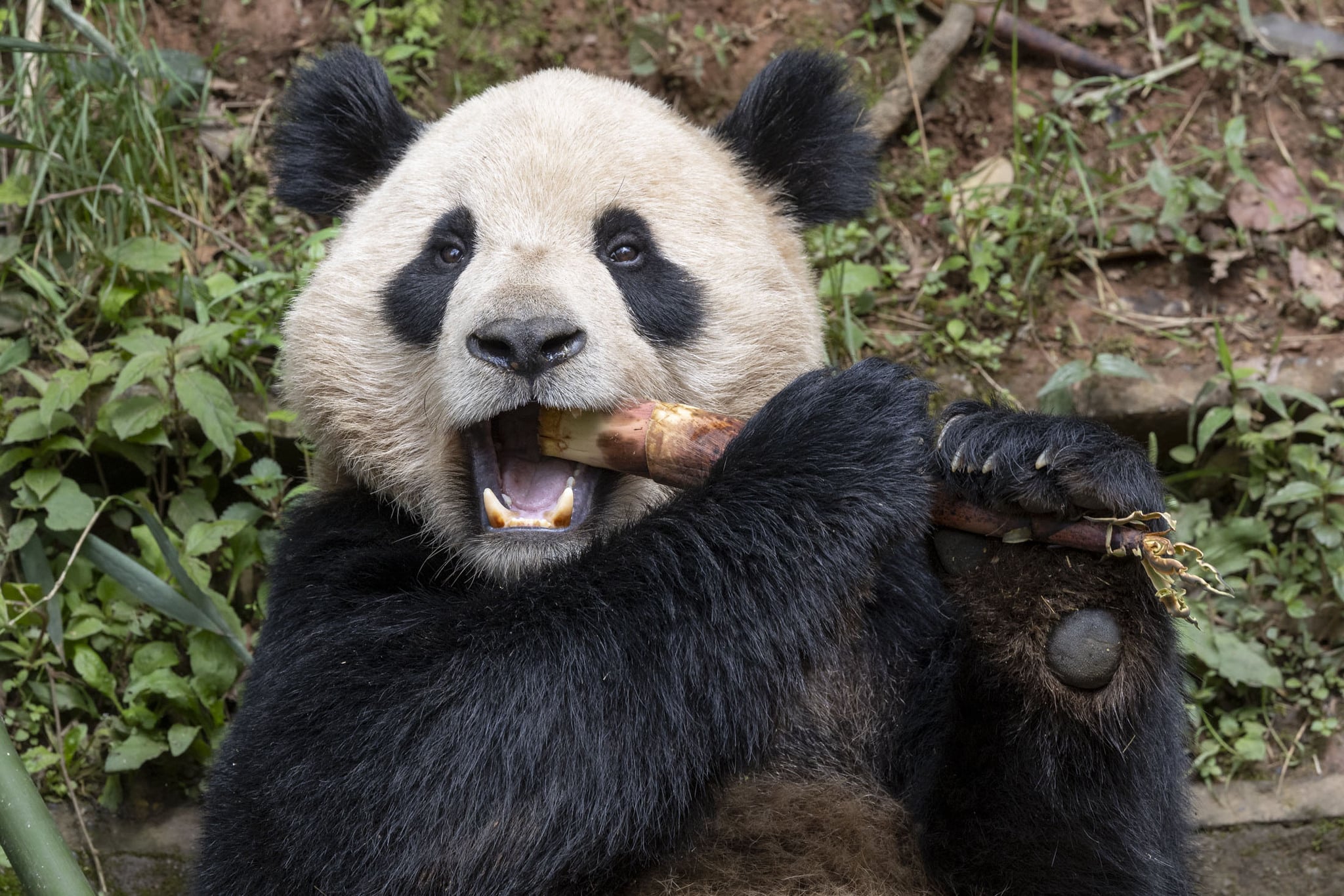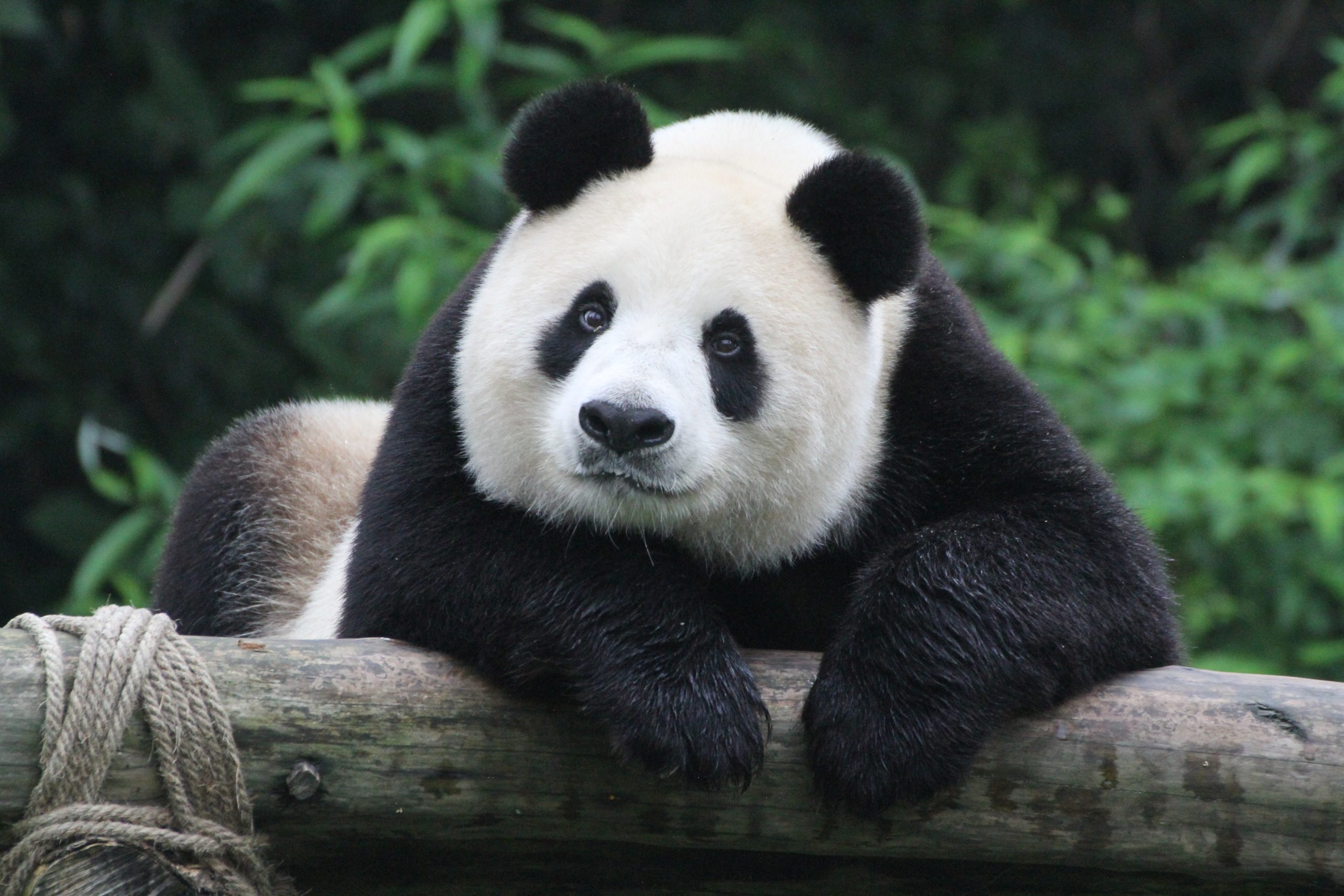San Diego Zoo's Panda Conservation Program
Megan Owen, an associate director with the San Diego Zoo Institute for Conservation Research, wrote this post about the San Diego Zoo’s Panda Conservation Program:
When Bai Yun arrived at the San Diego Zoo back in November 1996, we all had great expectations for the San Diego Zoo’s panda conservation program. And we knew that these expectations rested squarely on Bai Yun’s beautiful black-and-white shoulders. In the years since, our panda conservation program has grown and has achieved a number of notable successes.
At the center of it all is Bai Yun. Of course, Gao Gao, too, has been extremely important to the success of our breeding program at the San Diego Zoo. Not all male pandas show appropriate breeding behavior, so Gao Gao’s arrival in San Diego in 2003 enabled us to fulfill our goal of studying giant panda reproduction, from breeding to maternal care. However, Bai Yun’s importance to our conservation program goes beyond her successes as a mother, as she has truly exemplified the role of conservation ambassador. Engaging and fascinating the public for the last 18 years, she is the quintessential giant panda, emblematic of the inherent beauty and value of wildlife.
Bai Yun will be 23 years old in September. For those of us who have watched her over the years, we are amazed at her consistent good health, youthful behavior, and appearance. However, this year, her estrous behavior has not been what it has been in the past. Can Bai Yun be heading toward reproductive senescence? Heading into her 23rd year, the answer, most likely, is yes; however, we won’t know for sure until next spring. As of this writing, Bai Yun has not shown more than a minimal level of the behavioral changes that are typically associated with estrus. Back in March, we saw a bit of scent marking and some water walking, behaviors that normally indicate that estrus is coming. However, the expression of these behaviors did not escalate, and soon after they began, they ceased. Since then, Bai Yun has been “quiet.” While estrus can occur into June, the vast majority of breeding, including for our bears here, occurs in March and April,
When Bai Yun gave birth to Xiao Liwu in 2012, it was widely noted that she was the second-oldest giant panda to give birth. While an impressive statistic, that notable milestone provided us with valuable information regarding the finite nature of a female’s biological capacity to produce offspring. Male giant pandas, like other male mammals, can theoretically sire offspring later in life, though for wild pandas, other factors may get in the way of this, including competition with other males for breeding access to females and choosy females that may not be interested.
Bai Yun has given birth to 6 cubs over the past 15 years. While some other females have given birth to 10 or more cubs, the number of litters a female has is typically no more than 6 or 7. For example, between 2004 and 2013, Bai Yun’s first daughter, Hua Mei, has had 10 cubs from 7 litters. While Hua Mei is 8 years younger than Bai Yun, it will be interesting to see whether or not she has more cubs in the coming years. These contrasting mother-daughter patterns are at the heart of one of our research questions: What are the limits of reproductive output in the species?
In some panda breeding facilities, cubs are weaned earlier in order to promote successive annual breeding opportunities. In other facilities, cubs are weaned at about 18 months, mimicking what we believe is the more natural timing of weaning. In these cases, females will only be able to breed every two years. Given this, we might expect to see females that breed every year producing 15 litters over their reproductive lives. However, this does not appear to be the case.
Understanding what governs female reproductive output in giant pandas has implications for both captive breeding and conservation of wild giant pandas, and we are currently analyzing a fairly large volume of data to address this question. Is reproductive output governed exclusively by chronological age? Or is it governed in part by health and vigor? And how does variation in inter-birth-interval (the time between successive pregnancies) influence a female’s lifetime reproductive output? We hope to have some answers to these questions in the coming months.
I have to admit that I never get tired of watching our giant pandas here at the San Diego Zoo. While the excitement of a new cub is undeniable, I know that I will enjoy watching Bai Yun and Gao Gao relax this summer, while young Xiao Liwu explores and plays, enjoying his first summer as a solo panda. Our panda family exemplifying their roles as ambassadors for conservation!
Source: San Diego Zoo
Related Posts
 2024-06-26Yun Chuan and Xin Bao moved to San Diego
2024-06-26Yun Chuan and Xin Bao moved to San Diego 2024-04-26San Diego Zoo's new panda pair
2024-04-26San Diego Zoo's new panda pair 2024-02-22San Diego Zoo Wildlife Alliance and China Wildlife Conservation Association Sign a New Cooperative Agreement for Giant Panda Collaboration
2024-02-22San Diego Zoo Wildlife Alliance and China Wildlife Conservation Association Sign a New Cooperative Agreement for Giant Panda Collaboration 2019-04-16Tree Dens Play a Critical Role for Giant Panda Mothers Rearing Cubs
2019-04-16Tree Dens Play a Critical Role for Giant Panda Mothers Rearing Cubs






